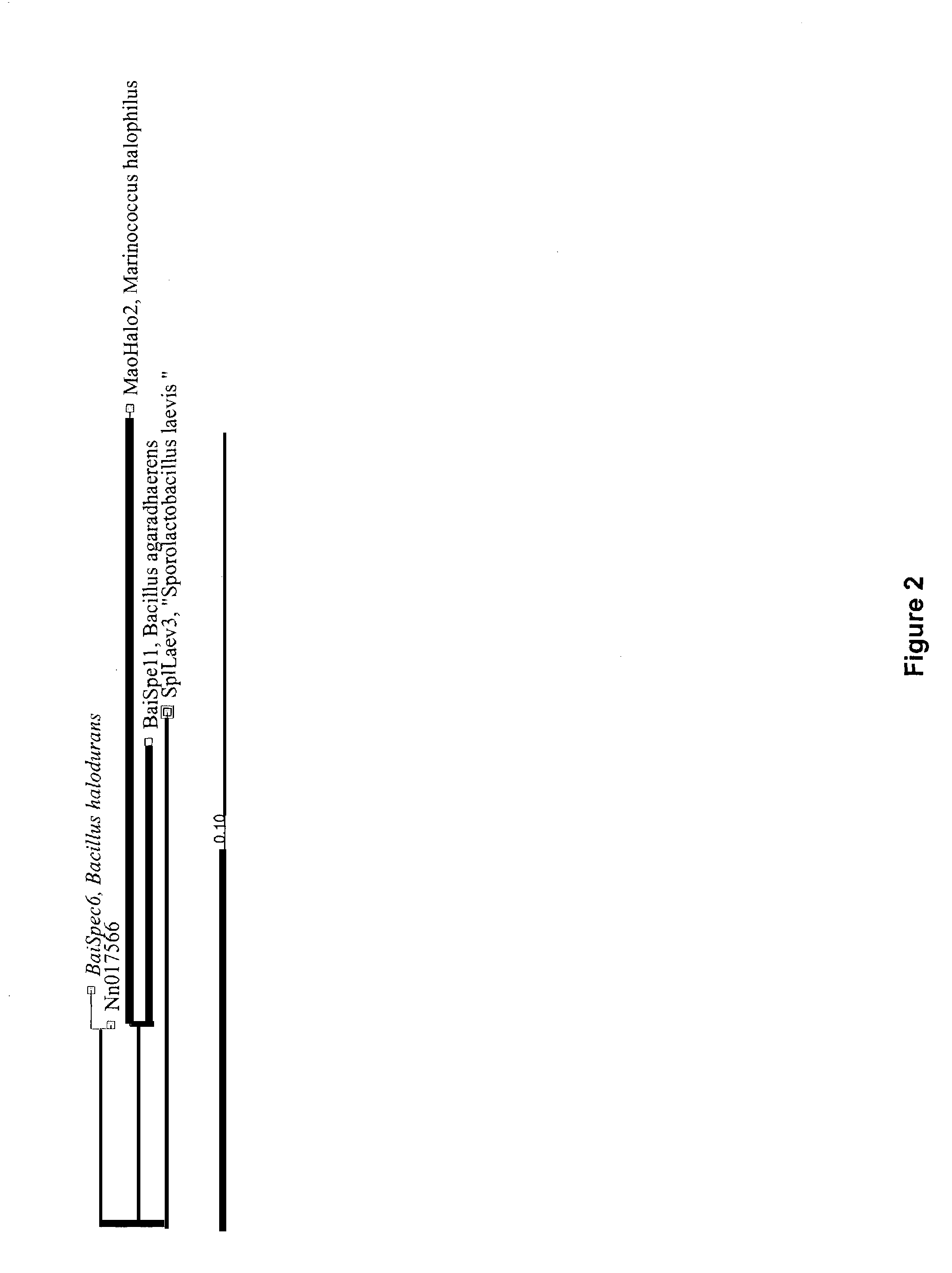Mannanases
a technology of mannanases and cellulose, which is applied in the field of mannanases, can solve the problems of red algae cellulose containing a significant amount of mannose, and achieve the effects of improving whiteness, preventing the binding of certain soils, and superior cleaning performan
- Summary
- Abstract
- Description
- Claims
- Application Information
AI Technical Summary
Benefits of technology
Problems solved by technology
Method used
Image
Examples
example 1
Mannanase Derived from Bacillus sp (I633)
Construction of a Genomic Library from Bacillus sp. I633 in the LambdaZAPExpress Vector
[0337]Genomic DNA of Bacillus sp. I633 was partially digested with restriction enzyme Sau3A, and size-fractionated by electrophoresis on a 0.7% agarose gel (SeaKem agarose, FMC, USA). Fragments between 1.5 and 10 kb in size were isolated and concentrated to a DNA band by running the DNA fragments backwards on a 1.5% agarose gel followed by extraction of the fragments from the agarose gel slice using the Qiaquick gel extraction kit according to the manufacturer's instructions (Qiagen Inc., USA). To construct a genomic library, ca. 100 ng of purified, fractionated DNA from above was ligated with 1 ug of BamHI-cleaved, dephosphorylated lambdaZAPexpress vector arms (Stratagene, La Jolla Calif., USA) for 24 hours at 4° C. according to the manufacturer's instructions. A 3-ul aliquot of the ligation mixture was packaged directly using the GigaPackIII Gold packagin...
example 2
Expression, Purification and Characterization of Mannanase from Bacillus sp. I633
[0362]The clone MB748 obtained as described in Example 1 and under Materials and Methods was grown in 25×200 ml BPX media with 10 micrograms / ml of Kanamycin in 500 ml two baffled shakeflasks for 5 days at 37° C. at 300 rpm.
[0363]4500 ml of the shake flask culture fluid of the clone MB748 was collected and pH was adjusted to 5.6. 100 ml of cationic agent (10% C521) and 180 ml of anionic agent (A130) was added during agitation for flocculation. The flocculated material was separated by centrifugation using a Sorval RC 3B centrifuge at 9000 rpm for 20 min at 6° C. The supernatant was clarified using Whatman glass filters GF / D and C and finally concentrated on a filtron with a cut off of 10 kDa.
[0364]700 ml of this concentrate was adjusted to pH 7.5 using sodium hydroxide. The clear solution was applied to anion-exchange chromatography using a 1000 ml Q-Sepharose column equilibrated with 50 mmol Tris pH 7.5...
example 3
Use of the Enzyme of Example 2 in Detergents
[0377]Using commercial detergents instead of buffer and incubation for 20 minutes at 40° C. with 0.2% AZCL-Galactomannan (Megazyme, Australia) from carob degree as described above followed by determination of the formation of blue color, the enzyme obtained as described in Example 2 was active in European powder detergent Ariel Futur with 60% relative activity, European liquid detergent Ariel Futur with 80% relative activity, in US Tide powder with 45% relative activity and in US Tide liquid detergent with 37% relative activity to the activity measured in Glycine buffer. In these tests, the detergent concentration was as recommended on the commercial detergent packages and the wash water was tap water having 18 degrees German hardness under European (Ariel Futur) conditions and 9 degree under US conditions (US Tide).
PUM
| Property | Measurement | Unit |
|---|---|---|
| molecular weight | aaaaa | aaaaa |
| diameter | aaaaa | aaaaa |
| concentration | aaaaa | aaaaa |
Abstract
Description
Claims
Application Information
 Login to View More
Login to View More - R&D
- Intellectual Property
- Life Sciences
- Materials
- Tech Scout
- Unparalleled Data Quality
- Higher Quality Content
- 60% Fewer Hallucinations
Browse by: Latest US Patents, China's latest patents, Technical Efficacy Thesaurus, Application Domain, Technology Topic, Popular Technical Reports.
© 2025 PatSnap. All rights reserved.Legal|Privacy policy|Modern Slavery Act Transparency Statement|Sitemap|About US| Contact US: help@patsnap.com



